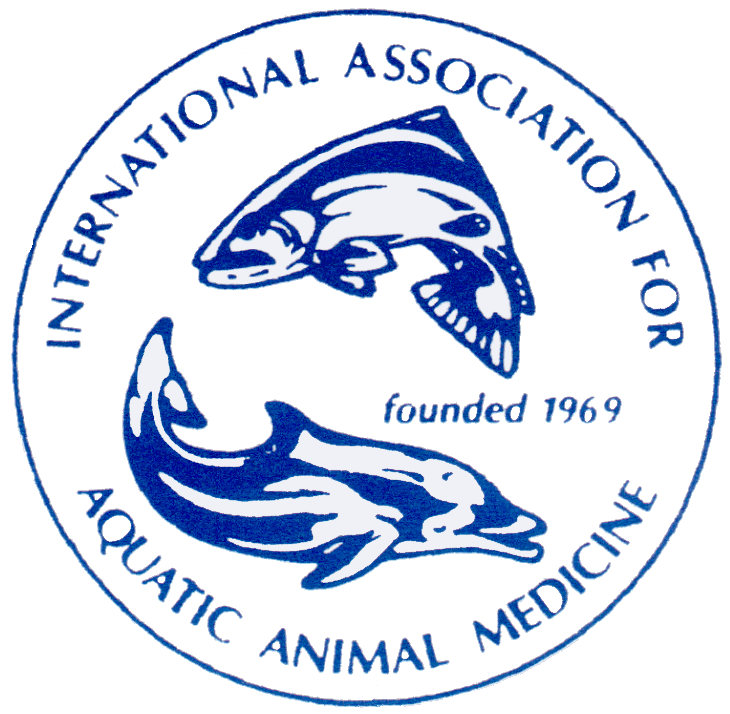The Medway Fund is part of the IAAAM 501(c)3, so all or part of your donation is tax deductible. The fund is still in need of donations to support student research. Please click on the DONATE tab under Education on the main IAAAM website to donate.
"Scientists examining a taxonomically confused group of marine mammals have officially named a species new to science: the Australian humpback dolphin, Sousa sahulensis, according to the Wildlife Conservation Society and Clymene Enterprises."
Click here for the rest of the story...
Since the original killer whale necropsy and disease testing protocol was drafted 2004, considerable advances have been made in defining pathologic processes in stranded killer whales and assessing their potential impact on individual and population health. Case definitions for forensic investigations have been refined and special studies to assess the impact of sound on ear ultrastructural anatomy have been developed. These protocols will be invaluable with suspect blast or sonar related strandings. The killer whale necropsy and tissue sampling protocol was updated to reflect these scientific advancements, further refine and standardize tissue sample collection and identify research personal who may assist with stranding incidents.
The protocol is available for download at: http://www.seadocsociety.org/?s=killer+whale+necropsy
Please take a moment to read over the 2013 IAAAM business meeting minutes prior to the 2014 IAAAM Business Meeting as you will be asked to approve them if correct.
The IAAAM Executive Board and Student Liaison Committee would like to congratulate the following recipients of the 2014 Student Travel Award:
- Kathrine Edgar - Alaska Sealife Center
- Jason Ferrante - University of Florida
- Greg Frankfurter - The Marine Mammal Center
- Kelsey Seitz – University of California Davis
- Jessica Weeks - University of Florida
- Laura Thompson – University of Connecticut
John M. Sykes IV, DVM, DACZM, Senior Veterinarian for the Zoological Health Program, Wildlife Conservation Society in New York, has released a series of on-line amphibian medicine tutorials on YouTube.
Each short 10-15 min video is designed to provide basic background information in various topics of amphibian medicine. The tutorials are available in 3 languages- English, Spanish, and French. The material is generally designed for use by veterinarians, but the information will be helpful to anyone involved in ex situ amphibian conservation programs. The tutorials are designed as an introduction, rather than a complete summary of all topics regarding amphibian medicine, and additional resources are listed in each tutorial.
Tutorials can be viewed as a stand-alone course, but will also be helpful for reviewing concepts taught at various amphibian husbandry and medicine workshops given around the world by organizations such as the AZA and the Amphibian Ark.
Link to the Amphibian Tutorial You Tube Channel: http://www.youtube.com/channel/UCaOhxmTP7asO5zyZQwYzh-A/videos
Easy to use playlists:
English: http://www.youtube.com/watch?v=oz64nOs452I&feature=share&list=PLVDi5N401GbHJe_8gfER06P6AfM1uRWU3
Español: http://www.youtube.com/watch?v=KBmfllzu4cw&list=PLVDi5N401GbFbEQHocZRjnhW7utsjiOEN&feature=share
Français: http://www.youtube.com/watch?v=gPQe6Ghnp3w&feature=share&list=PLVDi5N401GbEVEEqzMqqvJiL-3Tm_fP_o
If you find errors, or have problems viewing the videos, please contact Dr. Sikes at jsykes@wcs.org
Since the beginning of July, more than 100 dolphins have washed up dead along the U.S. East Coast, from New York to Virginia. No one knows why, or whether the deaths are connected.
A 42-foot-long fin whale was stranded alive on a beach just north of San Francisco and died shortly there after. This stranding gave scientists a rare opportunity to perform a necropsy on a fresh fin whale carcass.
Congratulations to the following IAAAM members on passing the American College of Veterinary Preventive Medicine Board Exam and becoming Diplomates:
- Jennifer Boonstra
- Stephen Cassle
- Robert Kim
- Scott Willens
Two twin sea otters were discovered in Morro Bay, off the coast of central California. "Roughly 2 percent of sea otter pregnancies result in the birth of more than one pup."
Read the full story at http://www.wired.com/wiredscience/2013/06/rare-sea-otter-twins/.
